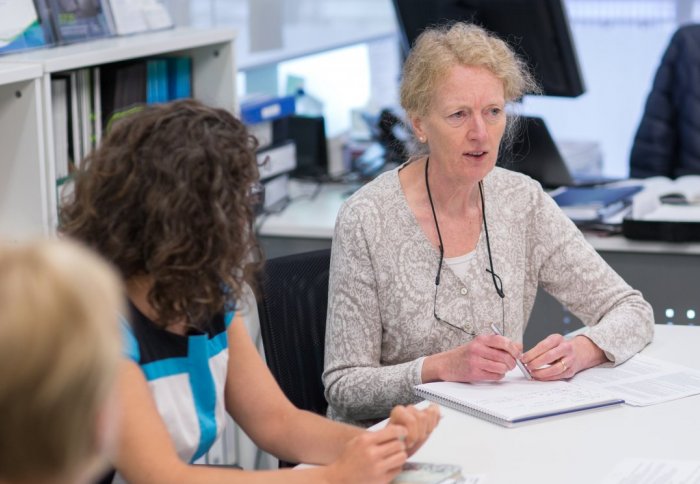Professor Jo Haigh answers questions about the warmest February on record
by Simon Levey

Global records show that February 2016 was the warmest on record. Now is the time for inventors, innovators and investors to step up, says Prof Haigh.
Temperature records show that this February was around 1.35°C warmer than the long-term (1951-1980) average for the month; in an extraordinary leap it beat by 0.2°C the previous record held by January 2016.
The warming was greatest in the Northern Hemisphere, and particularly in the Arctic where the anomaly reached about 5.4°C, associated with a record low value for winter maximum sea ice cover.
Joanna Haigh, Grantham Institute Co-Director and Professor of Atmospheric Physics at Imperial College London, answers questions about the new record temperatures.
What has caused this?
Various reasons have been proposed for this extraordinary temperature rise, including the global effects of the ongoing El Niño event, changes in ocean circulation, human-induced climate change and just natural fluctuations.
Although none of these seems plausible as a sole cause and it may be that several have combined in a “perfect storm”.
So, if the effect is temporary, will it pass?
El Niño is likely to subside over the coming months and the warming associated with the Pacific Decadal Oscillation in ocean circulation and temperature within perhaps 10-15 years. Natural variations of amplitude around 0.2°C occur from year to year so could reduce an annual value. What is not going to go away by itself, however, is the underlying global warming due to increasing concentrations of greenhouse gases.
What does this mean for the ambition to keep global warming below 2°C, or 1.5°C?
The international climate goals negotiated in Paris last December include the objective of keeping the global temperature rise this century to well below 2°C above pre-industrial temperatures. A further aim is for a 1.5°C limit. However, as the 1951-1980 reference level is already 0.3°C above pre-industrial February actually exceeded that value.
Can governments make a difference?
Concerted action on reduction in emissions of greenhouse gases is needed to slow down the rate of temperature rise needs. The UK government’s Climate Change Committee has established targets on CO2 emissions, the first four 5-year periods reaching a legally-binding 52% reduction by 2025 and the fifth carbon budget, set for debate in parliament this year, of 57% by 2030. Energy Minister Andrea Leadsom also stated on 14 Mar 2016 “The government believes that we will need to take the step of enshrining the Paris goal for net zero emissions in UK law. The question is not whether but how we do it.”
What can I do about it?
People know we need to reduce the carbon emissions from our way of living, but more effort needs to be directed on how to achieve this in practical terms. From governments, this must include low-carbon provisions for energy, heat and manufacturing. For ordinary people, the opportunities for inventors, innovators and investors to step up to this challenge are there for the taking!
Article text (excluding photos or graphics) © Imperial College London.
Photos and graphics subject to third party copyright used with permission or © Imperial College London.
Reporter
Simon Levey
Communications Division